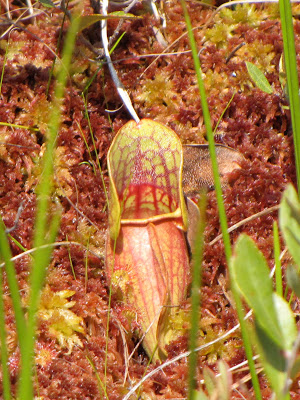 |
| Franklin Mountains State Park, El Paso, Texas |
Armed with a printout of El Paso birding spots downloaded from the
local Audubon chapter, I drove my little rental car straight to
Franklin Mountains State Park, a hat and a bottle of water in my hand, ready to face the 103 degree afternoon heat. In a genuine desert, the Chihuahuan.
I was greeted at the entrance by a giant grasshopper.
This was going to be great.
The Tom Mays unit, not far from Rte 10, includes a very mild nature trail complete with a bird blind/feeder set up. It felt a little like cheating but I spent most of my time there. Actually it was paradise.
What is it about new birds? I cannot deny the "listing" rush, the vision--with the bird right in front of you--of yourself back in a dark hotel room checking off an empty box in that forever open birding project. But that's just the start, a way of getting oriented. Who are the main characters in this story? Who will flit in, make an appearance and leave and who will become a constant companion?
The anchor birds for me were the ubiquitous chirping house finch, the mourning dove, and the white-winged dove, which I had seen quite a lot of in Costa Rica.
 |
| White-winged dove, Franklin Mountains State Park, El Paso, TX. |
Everything else was new. The black-throated sparrow, a friendly little bird with a lovely song.
 |
| Black-throated Sparrow, Franklin Mountains State Park, El Paso, TX |
The black-chinned hummingbird, the so-called southwest counterpart of the ruby-throated hummingbird, but much more common, zooming everywhere.
 |
| Black-chinned hummingbird, Franklin Mountains State Park, El Paso, TX |
The top-heavy ash-throated flycatcher, a pair of which flew right up to me as if to voice a complaint.
 |
| Ash-throated Flycatcher, Franklin Mountains State Park, El Paso, TX |
 |
| Ash-throated Flycatcher, Franklin Mountains State Park, El Paso, TX |
The somewhat more elegant brown-crested flycatcher (
I think--I really have no business ID-ing unfamiliar flycatchers).
The nearly invisible canyon towhee.
 |
| Canyon Towhee, Franklin Mountains State Park, El Paso, TX |
The gigantic cactus wren, making itself comfortable at the feeder
 |
| White-winged Doves and Cactus Wren, Franklin Mountains State Park, El Paso, TX |
and at the shallow desert-style bird bath.
 |
| Cactus Wren, Franklin Mountains State Park, El Paso, TX |
But the most striking birds were the quails. When I first read that quails were considered common, even abundant, in areas of El Paso, I couldn't quite believe it. I live in such a quail impoverished region, lucky to see or hear a bob white once a year. But here they were among the doves and finches at the feeder. The stunning Gambel's quail
 |
| Gambel's Quail and House Finch, Franklin Mountains State Park, El Paso, TX |
 |
| Gambel's Quail and House Finch, Franklin Mountains State Park, El Paso, TX |
 |
| Gambel's Quail and White-winged Dove, Franklin Mountains State Park, El Paso, TX |
and the equally lovely scaled quail.
 |
| Scaled Quail, Franklin Mountains State Park, El Paso, TX |
I would see a lot more of these quails, mostly running away from me, kicking up trail dust. The scaled quails in particular have a comical running style--completely erect with their necks extended and often turned back to look at you, their topknots bouncing.
There is life in this desert, which caused a little pain, even as an outsider, when I viewed the way El Paso seems to take the land outside of the park as empty space, prime for another outlet mall.
I'll end this post by setting up a little narrative suspense. Here's the coyote.
 |
| Coyote, Frankin Mountains State Park, El Paso, TX |
|
|
Would I see the roadrunner?


















































